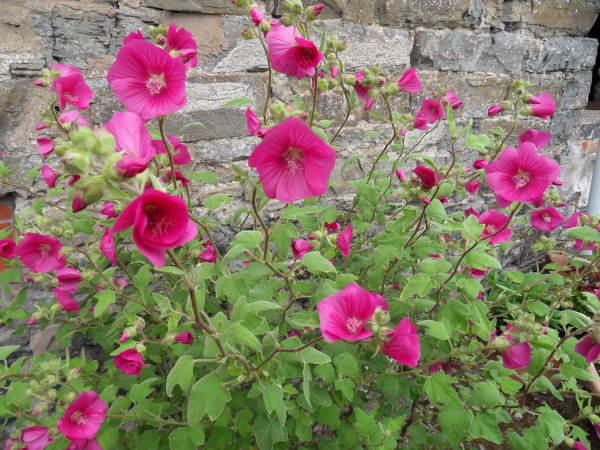How to grow Lavatera
This member of the mallow family can be annual, biennial, and perennial, though it is the shrubby forms which tend to be most popular among gardeners. The natural habitat of most species tends to be dry, rocky places, often around the coast. Lavatera is valued for its vigorous growth habit and masses of large, hollyhock-like flowers throughout the summer months.
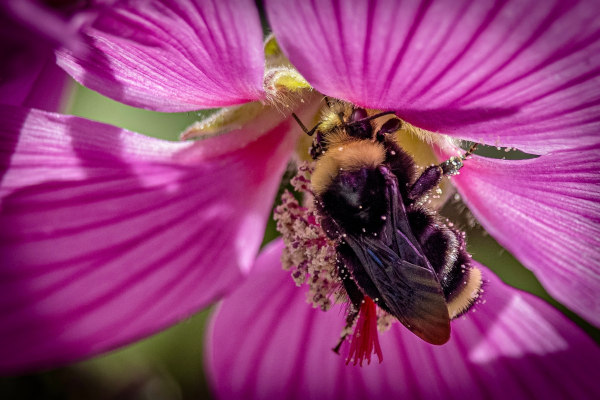
Zantedeschia is a genus of flowering plants from the family Araceae and is native to southern Africa. With a rich history dating back to the Ancient Romans, these deciduous or semi-evergreen perennials have been used as a symbol of celebration. Zantedeschia was Named after Professor Giovanni Zantedeschia, an Italian botanist.
There are two main forms of Zantedeschia: hardy and tender. Hardy forms of the plant can be grown outdoors, enjoy moist soil and full sun or partially shaded conditions - these are known as Arum lilies. Tender forms of Zantedeschia prefer being grown in containers or pots and should be brought inside over the winter - these are known as Calla lilies.
With tuberous flora in all colours from whites, yellows and oranges to deep reds and purples, Zantedeschias are not to be overlooked in any garden, as long as they have sufficient sunlight to grow in.
Ready to learn more about growing Zantedeschia? Read on for all there is to know...

Key Information
Soil pH
Position
Hardiness

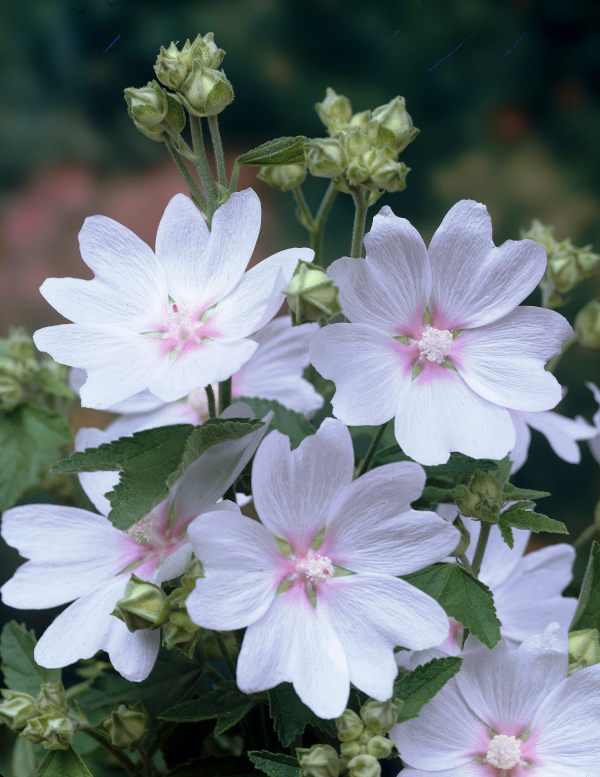
Where & when to plant Lavatera
Position- A sunny spot, sheltered from winds
Soil- Light and well-drained
Flowering Period- Summer
Hardiness - Ranges from half-hardy to hardy (check individual descriptions for details)
For damp-averse plants such as lavatera, it is best to plant in spring once the wettest of the winter weather is over. Planting can also be carried out in summer, though be prepared to water regularly.
The shrubby types offered by Hayloft tend to get relatively tall (between 1 and 2 metres), and so are well suited to the back of a sunny, sheltered border or as a focal point within a container display. Having lavatera in front of a warm, south-facing wall can boost its hardiness and performance (especially in colder regions).
In the ground, avoid soil prone to winter waterlogging.
How to plant Lavatera
In the ground
- Clear the chosen area of weeds.
- Dig a planting hole several times larger than the root ball. It is a good idea to mix in plenty of horticultural grit and well-rotted organic matter at this stage.
- Place the plant in the hole, ensuring the top of the root ball sits level with the surface of the soil. Too low and the plant may rot, too high and the roots can dry out.
- Backfill with soil and firm in gently.
- Soak well with water.
- Mulch around the base with well-rotted organic matter.
In a container
- Choose an appropriate container with plenty of drainage holes. For plants which dislike wet conditions such as lavatera it is important not to overpot, as, until the roots have grown into it, the surrounding compost is likely to remain damp after watering. Instead, go for a container just a few centimetres bigger than the existing pot, and move up gradually every couple of years.
- Use a good quality potting compost with plenty of horticultural grit mixed in, and, if not already present in the compost (check the description on the bag) some slow-release feed.
- It can be a good idea to fill and plant larger containers in situ to save yourself the trouble of moving them once full.
- Start by partially filling the pot with compost; enough so that when placed on it the upper surface of the root ball is about 3cm lower than the top of the pot.
- Infill all the space surrounding the root ball with compost, firming down with your fingers then adding a little more so the plant is held tight.
- Pick up the pot (if you can!) and lightly tap on the ground a few times to help further settle the compost around the plant.
- Soak well with water.
- A mulch with horticultural grit will look attractive and help to prevent a ‘cap’ or crust forming on the top of the compost (something container plants can suffer due to the artificial nature of their watering).
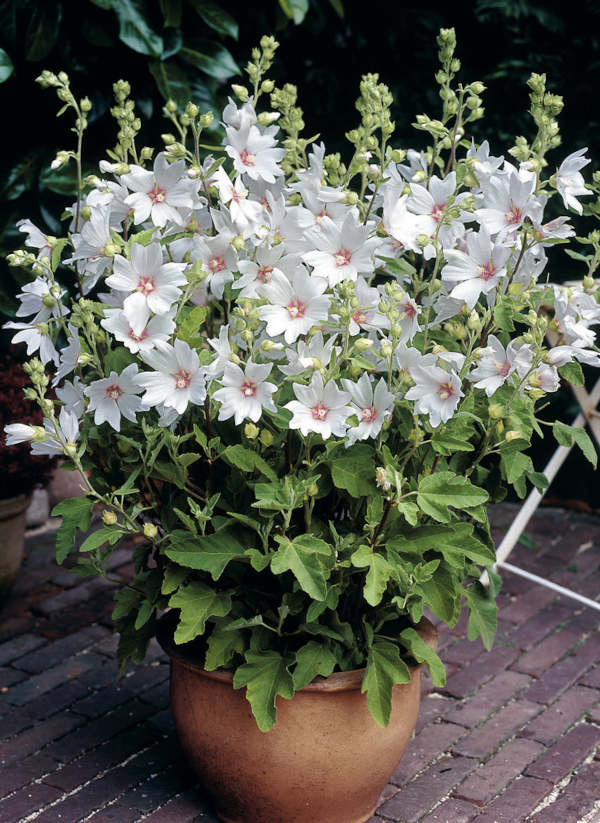
What to plant with Lavatera
Lavatera is one of the ultimate cottage garden plants, and works particularly well in a border overflowing with other sun-loving classics such as verbena, persicaria, kalimeris, and nepeta. A climbing rose clambering up a support with alchemilla and oreganum nestling at ground level complete the picture of perfection.
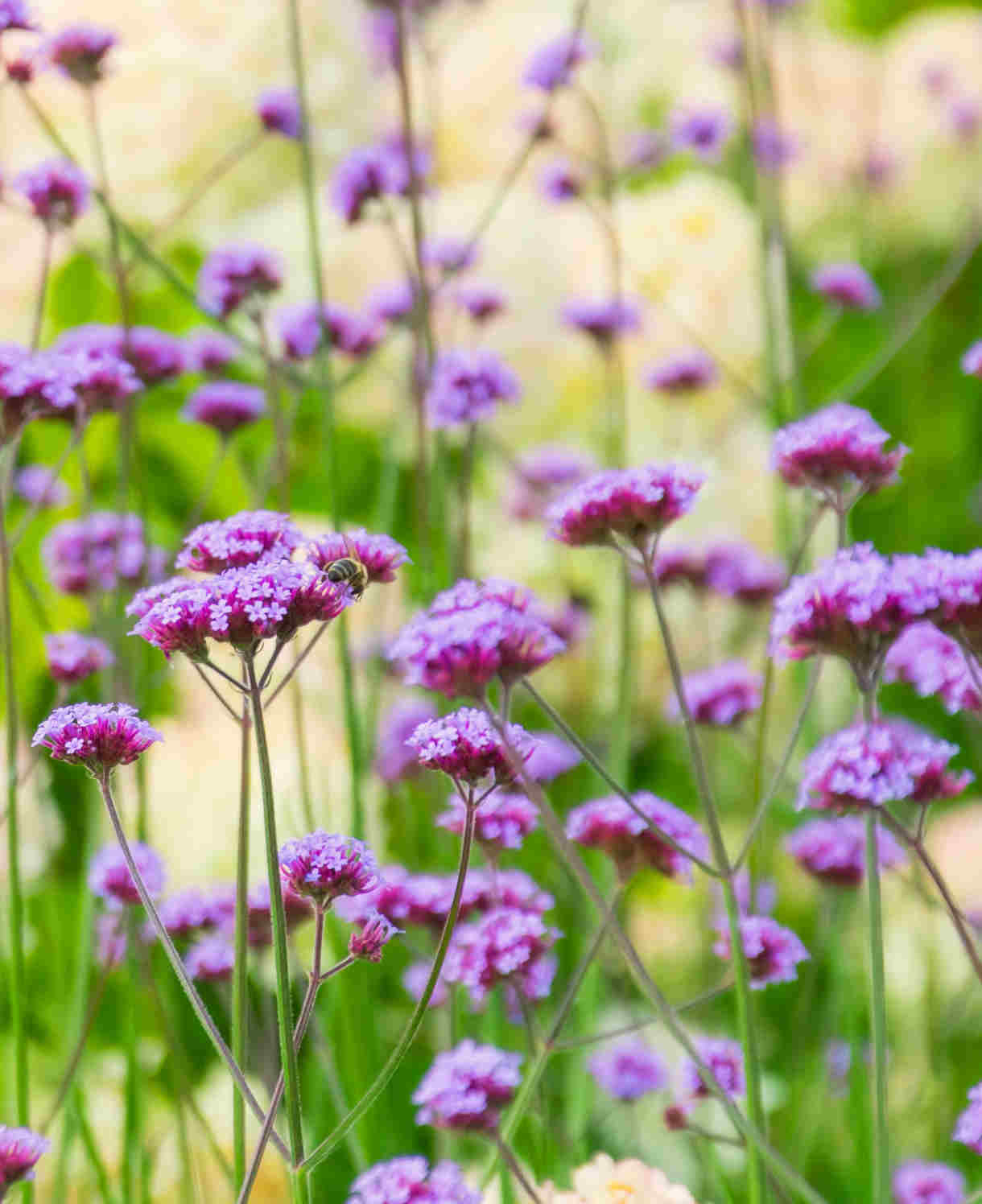
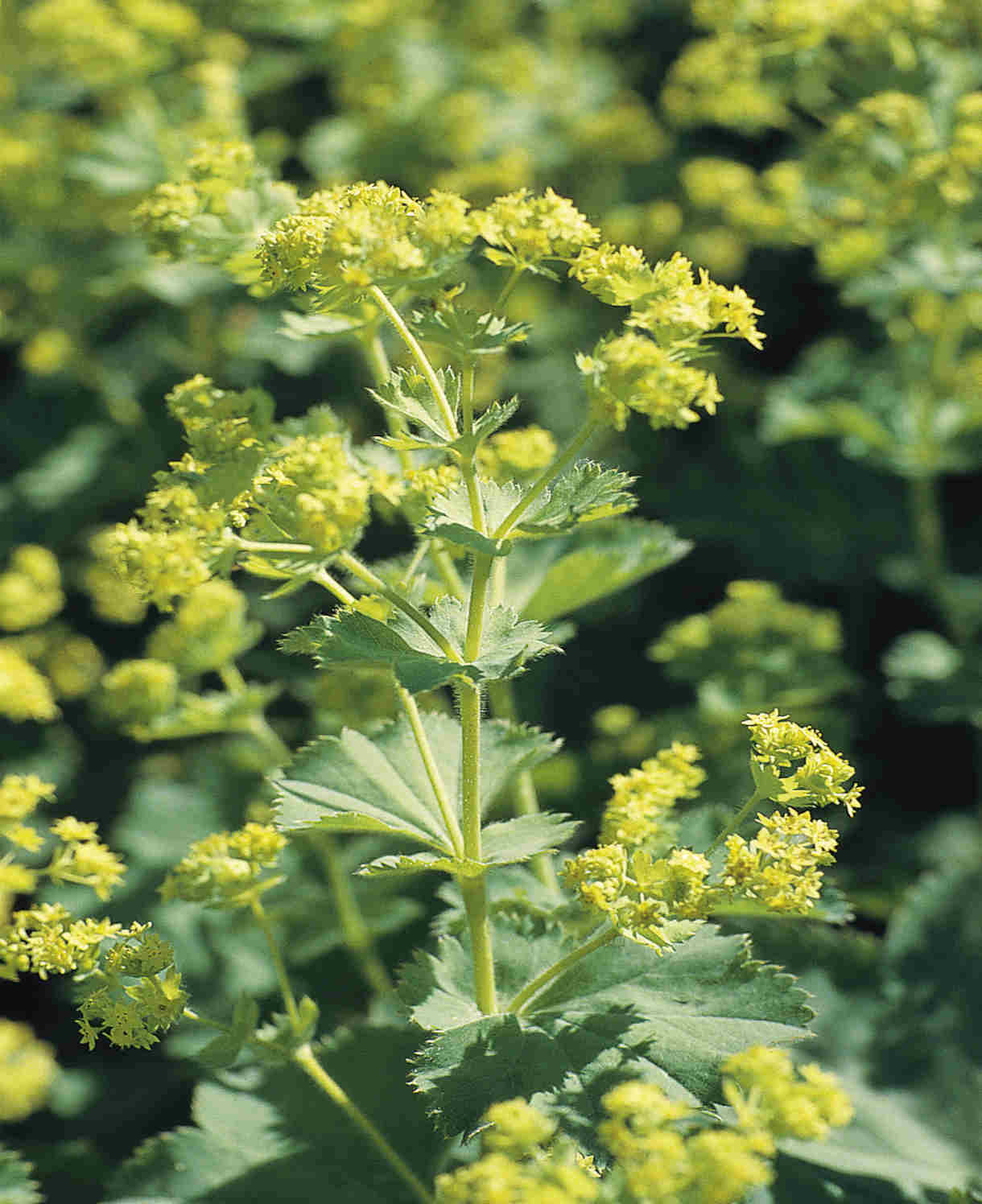
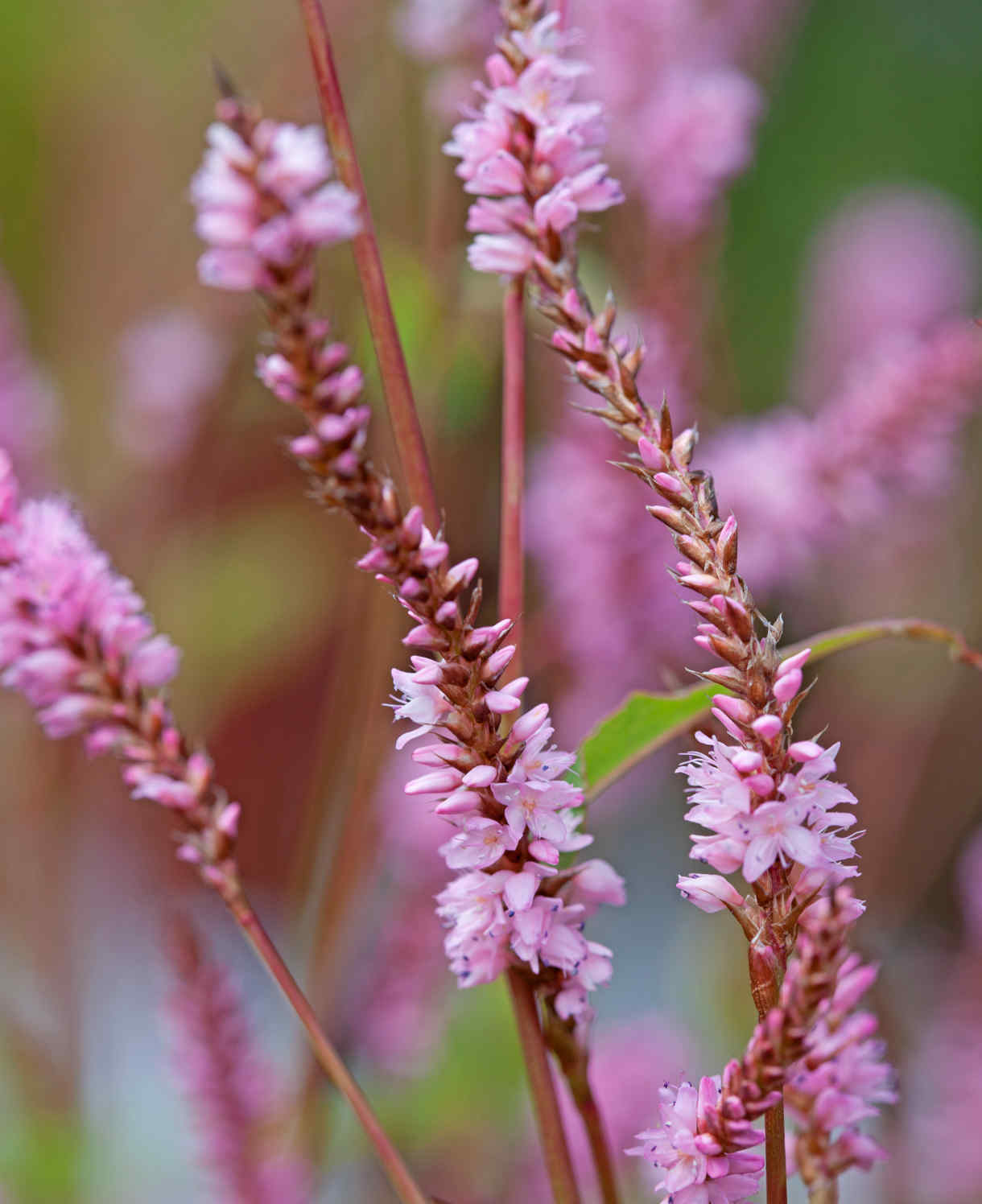
How to care for Lavatera
Pruning and Deadheading
Subshrub types can be given a light tidy in autumn if needed, and then cut back hard to the woody base once the worst of the weather has passed in late spring. Subshrubs can be identified by their having a woody base, and softer, more herbaceous-like top growth. They include Lavatera clementii and its cultivars.
Shrubs (meaning those with a permanent woody framework, such as Lavatera maritima), can be pruned in spring. Remove any dead, diseased, damaged, or crossing wood, and shorten last year’s growth to within one or two buds of the previous cut. Done annually this will maintain a neat, dense, compact shape.
Watering
Water until established, after which this drought tolerant plant tends to be self-sufficient.
Container-grown lavatera require regular watering throughout the growing season. Allow the top few centimetres of compost to dry out between soakings. Keep just moist throughout winter.
Cold Protection
Of the lavatera offered by Hayloft:
- maritima is half-hardy (with a minimum temperature somewhere between 1°C and -5°C) and will require winter protection. This can mean growing in a container and overwintering under cover, growing with the protection of a sunny, warm wall, or using a fleece jacket.
The rest are more hardy, their minimum temperatures ranging from -5°C to -15°C. ‘Marshmallow White’, ‘Red Rum’, ‘Rosea’, ‘Burgundy Wine’ are at the lower end of this, so are either best avoided by those gardening in colder regions or given protection as above.
Pests and Diseases
Lavatera is generally a healthy, robust plant, though like all members of malvaceae, can succumb to rust. This fungal disease causes spotting and discolouration of foliage, and in severe cases can stunt the growth of the plant.
A few simple steps can be taken to reduce the risk of this becoming a problem, such as not planting too densely, and minimising the presence of other malvaceae plants nearby (including the common mallow wildflower). If rust does arrive, remove and dispose of any affected leaves as soon as you can. Very heavily infected plants should be removed altogether.
How to propagate Lavatera
Lavatera can be propagated by cuttings taken during early summer.
- Find non-flowered shoots 5-10cm long and snip off the plant.
- Put them in a plastic bag straight away to prevent drying out.
- Fill a container with a compost mix which is at least 50% perlite (or if you prefer, as we do, 100% perlite).
- Trim the end of the cutting to just below a node (point at which leaves grow).
- Remove the lowest third of leaves.
- If the remaining leaves are large, cut them in half with a sharp knife (to reduce water lost through transpiration).
- Insert the cuttings into the compost and water lightly. Several cuttings can be put in the same container if there is enough space to do this without them touching.
- Place in a greenhouse or propagating unit if you have one or covered with a plastic bag on a windowsill if not (out of direct sunlight).
- Keep the cuttings misted and occasionally watered until they root. You will know this has happened when roots emerge out of the bottom of the container.
- Gently remove rooted cuttings and pot them into individual pots. Grow on in a cool yet frost-free environment such as an unheated conservatory, greenhouse, or cold frame, until they are large enough to be planted out.
Common Lavatera questions
Does lavatera come back every year?
While annual lavatera species do exist, by far the most commonly found in gardens (and offered by Hayloft), are the shrubby types which yes, do remain in the garden year after year. Having said this, they can be relatively short-lived, and tend to need replacing every five years or so.
Should you cut back lavatera?
All lavatera will benefit from being pruned; to what extend depends on which type it is. See ‘Pruning and Deadheading’ section above for detailed instructions relating to the types currently sold by Hayloft.
Does lavatera grow quickly?
Yes, lavatera is considered to have a quick rate of growth, often reaching its full size within one or two growing seasons.
Can you grow lavatera from cuttings?
Absolutely! And in fact, we recommend doing this regularly as lavatera is known for being relatively short-lived. See ‘How to propagate lavatera’ section above for detailed instructions.
